The Double Asteroid Redirection Experiment (DART) mission was designed to test the planetary defense capability in the event of a threatened asteroid impact on Earth
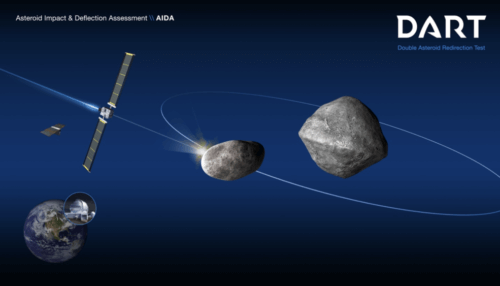
The Double Asteroid Redirection Experiment (DART) mission is assigned by NASA to the Applied Physics Laboratory (APL) with support from several NASA centers: the Jet Propulsion Laboratory (JPL), Goddard Space Flight Center (GSFC), Space Center III Venson (JSC), Glenn Research Center (GRC) and Langley Research Center (LRC).
DART is a planetary defense experiment of technologies to prevent the collision of a dangerous asteroid with the Earth. DART will be the first demonstration of the kinetic collider technique to alter the motion of an asteroid in space. The DART mission is in Phase C, led by APL and managed as part of NASA's Solar System Exploration Program at the Marshall Space Flight Center for NASA's Planetary Defense Coordination Office and the Planetary Science Division of the Science Mission Administration at NASA Headquarters in Washington.
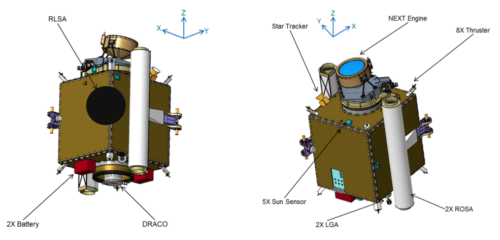
The near-Earth binary asteroid (65803) Didymus is the target of the DART demonstration. Didymus' main body is about 780 meters long, but its secondary (or "moon") body is about 160 meters in size, which is more typical of the size of asteroids that could pose the most likely significant threat to Earth. The double asteroid Didymus is being intensively observed by ground-based telescopes to precisely measure its properties before DART arrives.
Fourteen Arecibo Radar images of the near-Earth asteroid (65803) Didymus and its moon, taken on November 23, 24, and 26, 2003. The capabilities of NASA's Planetary Radar allow scientists to distinguish the shape, large globules and rocks possible on the surface of these small worlds. Photometric light curve data showed that Didymus is a binary system, and radar images clearly show the secondary body.
The diameter of the main body is about 780 meters and the size of the moon is about 160 meters. The distance between them is a little more than a kilometer. The main body rotates every 2.26 hours and the tidally locked moon rotates around the main body every 11.92 hours. Almost one-sixth of the population of known near-Earth asteroids are double or multi-body systems.
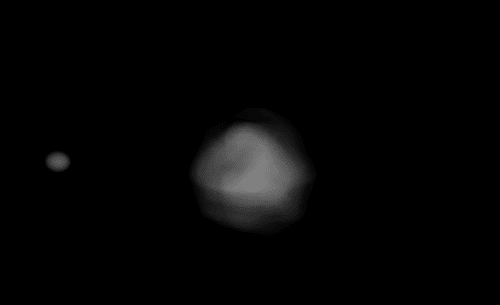
The DART spacecraft will achieve the diversion by means of a kinetic approach by self-directed crash into the Moon at a speed of approximately 6.6 km per second, aided by an onboard camera (named DRACO) and sophisticated autonomous navigation software. The collision will change the speed of the moon in its orbit around the main body by a fraction of a percent, but it will change the moon's orbital period by a few minutes - enough for telescopes on Earth to notice and measure.
Once launched, DART will deploy its deployable solar arrays (ROSA) to provide the solar electricity needed for DART's electric propulsion system. The DART spacecraft will demonstrate the NEXT-C solar electric propulsion system as part of its propulsion in space. NEXT-C is a next-generation system based on the propulsion system of the Dawn spacecraft, and was developed at NASA's Glenn Research Center in Cleveland, Ohio. By using electric propulsion, DART can enjoy great flexibility in the mission schedule while demonstrating the next generation of ion engine technologies, with applications in future NASA missions. The ROSA array was tested on the International Space Station in June 2017.
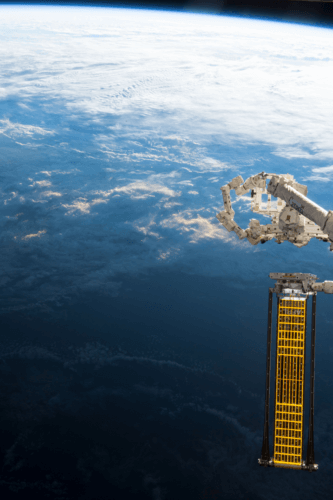
The launch window for the DART spacecraft begins in late July 2021. DART will be launched on a SpaceX Falcon 9 rocket from Vandenberg Air Force Base, California. After separating from the launch vehicle and more than a year of cruising, it will intercept the Didymos moon at the end of September 2022, when the Didymos system will be within 11 million km of Earth, which allows ground telescopes to make observations and a planetary radar to make measurements of the change in momentum that will be imparted to the moon.
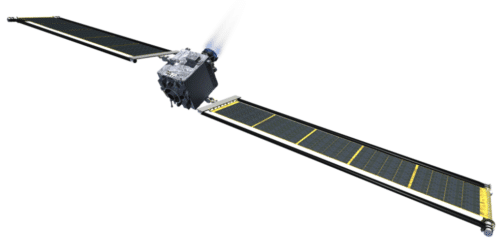
Details on the double asteroid Didymus and the DART mission
| Disclosure (by Joe Montany, Spachwatch, KPNO) | April 11 1996 |
| Temporary marking | 1996 GT |
| discrimination | 2.2755 XNUMX |
| perihelion | 1.0141 XNUMX |
| semi-heliocentric major axis (a) | 1.64444 XNUMX |
| eccentricity (e) | 0.38388 |
| coffee cycle (around the sun) | 2.11 years |
| Heliocentric tilt of the lap (i) | ˚3.4078 |
| Known satellites | 1 |
| rotation cycle (of the main body) | 2.26 hours |
| Distance between the primary and the lunar | 1.18 km |
| The monthly coffee cycle | 11.92 hours (locked in tide lock) |
| the main diameter | 780 meter |
| The diameter of the moon | 160 meter |
| The mass of the system | 527.8 billion |
| density | 1.7 (±0.4) g/cc |
| spectral type | Xk (optical); S (infrared) |
| Absolute size H | 18.16 |
| Last close approach to Israel (November 2003) | 7.18 million km |
| Close approach to the DART mission (October 2022) | 11 million km |
To the article on the NASA website
More of the topic in Hayadan:
